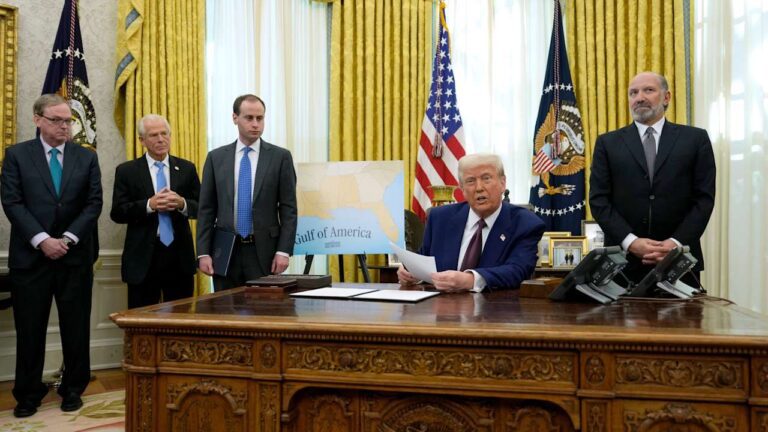🎧 Listen to This Article
Trump Slaps Tariffs on the EU, Blames VAT for ‘Unfair Trade Practices’
Former President Donald Trump has reignited his battle against the European Union’s (EU) value-added tax (VAT) system, blaming it for what he calls “ripping off” the United States. Following this claim, he has imposed some of the steepest tariffs on EU imports to date. But what is VAT, and why does Trump see it as an unfair trade advantage?
What is a Value-Added Tax (VAT)?
VAT is a consumption tax applied at every stage of production. Unlike the U.S. sales tax, which is levied only at the point of final sale, VAT is collected throughout the supply chain and is ultimately paid by the consumer. This tax structure is used in over 170 countries, with European VAT rates averaging 20%—far higher than the 6.6% average U.S. sales tax (2023, Tax Foundation).
One of VAT’s key features is that exported goods are largely VAT-exempt, as exporters can claim refunds on VAT paid during production. Trump argues that this effectively gives European exporters a competitive edge, allowing them to sell goods internationally at lower prices.
Trump’s Argument: “They Rip Us Off”
Trump has long criticized the VAT system, stating:
“They rip us off. It’s so sad to see. It’s so pathetic.”
His primary concerns include:
- Export Advantage – European businesses receive VAT rebates on exports, effectively reducing their costs abroad.
- U.S. Disadvantage – U.S. firms exporting to Europe must pay VAT on sales, while European firms selling to the U.S. avoid sales tax at export.
- Trade Imbalance – He argues VAT creates an uneven playing field, making U.S. goods less competitive globally.
However, economists counter this view, noting that VAT rebates for exporters function similarly to the U.S. system, where no sales tax is charged on exports.
The Origins of VAT & Global Adoption
VAT was pioneered by France in the 1950s and quickly spread throughout the European Union and beyond. China and other major economies also adopted VAT to boost exports, increasing competition for U.S. businesses. In fact, VAT now generates over 20% of tax revenue in 21 of the 37 OECD countries that implement it.
Despite periodic discussions in the U.S., a federal VAT has never gained traction. Bill Clinton’s 1993 energy tax proposal included VAT elements but was rejected. Since then, Republicans have opposed any new tax structures, favoring tariff-based trade measures instead.
The Trade War Fallout: EU & China’s Response
Trump’s new tariffs—double the standard 10% rate applied to other trading partners—are expected to have significant economic repercussions. In response:
- The EU is considering counter-tariffs on U.S. tech and financial firms.
- China previously increased VAT relief to help exporters offset Trump’s first-term tariffs, but may not do so again.
- European businesses could face billions in losses due to higher U.S. import costs.
What’s Next?
Trump’s latest trade measures are set to reshape U.S.-EU trade relations. As the VAT debate continues, the question remains: Will the U.S. finally embrace a VAT system to remain competitive, or will tariffs become the default countermeasure?
For further details, clarification, contributions, or any concerns regarding this article, please contact us at editorial@tax.news. We value your feedback and are committed to providing accurate and timely information. Please note that our privacy policy will handle all inquiries



